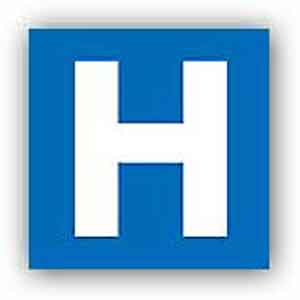|
Oral cancer drugs that target key enzymes in tumor cells have made significant contributions to oncology care, freeing many patients from spending long hours at infusion centers to receive their chemotherapy treatments. But new research shows that
23-74 percent of patients taking one of nine oral oncology medications were also on a drug that had the potential to reduce the effectiveness of the cancer treatment or increase its
toxicity.

The study by the Medco Research Institute™, the research subsidiary of Medco Health Solutions, Inc. is being presented at the 2012 American Society for Clinical Pharmacology and Therapeutics (ASCPT) Annual Meeting.
The cancer therapies studied are in a class known as oral kinase inhibitors which include the medications imatinib and erlotinib.
Medications that may cause drug-drug interactions include proton pump inhibitors (PPIs), steroids, calcium channel blockers and certain antibiotics and antifungal agents.
The study reviewed the pharmacy claims of about 11,600 patients taking one of nine kinase inhibitors that treat different forms of cancer and evaluated the number of patients who were taking at least one other drug that had the potential to cause a drug interaction with their cancer treatment.
In addition to imatinib and erlotinib, the cancer drugs studied included dasatinib, everolimus, lapatinib, nilotinib, pazopanib, sorafenib, and sunitinib.
"Since these are drugs launched in the past decade for fairly small patient populations, we are learning more about how they are used in real-world settings as compared to traditional clinical trials that test safety and efficacy in a tightly-controlled environment," said Dr. Steve Bowlin, senior director and therapeutic area research lead, MRI, and a co-author of the study. "Oncologists are not always aware of other medications prescribed by other doctors and vice-versa, which can pose a real hazard for their patients on oral cancer
therapies."
Forty-three percent of the 4,617 patients receiving imatinib in the study were prescribed a drug that may diminish the cancer drug's efficacy and 68 percent of patients received a drug that may raise the level of toxicity of the treatment The other drugs studied were found to have their efficacy potentially impaired between 23 and 57 percent of the time.
Anywhere from 24 to 74 percent of patients were using medicines that may heighten toxicity of the other cancer drugs
studied.
"Complex medication regimens can raise the odds of drug interactions, and we are finding that many drugs prescribed to cancer patients share genetically-determined metabolism and transport pathways that may affect response to cancer treatment and merit additional study," said Dr. Eric Stanek, vice president of research, MRI, and a co-author of the study.
"As we learn more about how to optimize treatment with cancer drugs, we are in a better position to share this knowledge with our patients and other clinicians through our Therapeutic Resource Centers, which can alert clinicians to these potential interactions, and so we can collaborate with them to seek therapeutic alternatives with less interaction potential whenever
possible."
Oral cancer drugs that have emerged in the past decade to treat a variety of cancers have revolutionized treatment since they have better side effect profiles than traditional chemotherapy without compromising efficacy. In some cases, they have transformed terminal diseases into chronic conditions that can be managed with
medication.
The costs of this generation of cancer drugs can however exceed $100,000 for a year of treatment. In 2010, specialty drugs to treat cancer, which include many of the treatments in the study, saw spending growth increases of 21 percent, driven by a 6.7 percent increase in utilization and an average increase of costs per day of treatment by 13.7 percent.
"By taking a holistic approach to caring for cancer patients and being diligent that they are managing their treatment regimen properly and getting the full benefit of the medications they are on, we can drive down both waste and cost, while helping to improve the health outcomes of the patient," said
Subar.
Source
Medco Health Solutions, Inc.
(MDN)
|
![]()